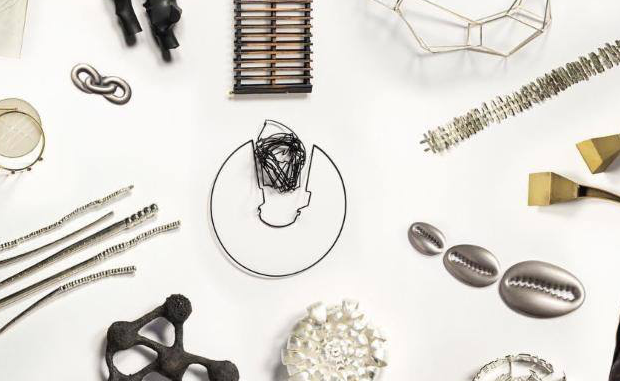
Move out the way Fashion Week, and make some room for Jewelry Week.
Students, faculty and alumni from SUNY New Paltz’s Metal Program packed their bags and set out to New York City for seven days of bling.
In its inaugural year, New York City Jewelry Week (NYCJW) ran from Nov. 12 to 18 and promoted the city’s jewelry industry, innovators, curators, retailers and historians through educational programs.
“I recognized that there was a real need for a jewelry week here in New York City,” said NYCJW Co-Founder Bella Neyman in a JCK article. “We have so many jewelers here and we wanted to find a way to highlight them.”
The first and only local week dedicated to celebrating the world of jewelry, NYCJW sought to feature, both culturally and historically, the complexity and diversity of jewelry.
“The goal of NYCJW is to bring sometimes disparate voices of jewelry in NYC together,” said SUNY New Paltz Metal Program alum and NYCJW Advisory Committee member Jonathan Wahl. “NYCJW offers a national and international platform for artists to exhibit their work in NYC to curators, industry professionals and other jewelers who might not normally see it.”
NYCJW featured 90 events city-wide, including “groundbreaking exhibitions, educational lectures, explorative workshops, exclusive tours and unique collaborations.”
At a raw, unpolished site within the legendary and historic Hotel Chelsea, the SUNY New Paltz Metal Program showcased their exhibition “denizen.”
Described as “transitional and evolving,” Hotel Chelsea provided an impactful platform for the unrefined, reflecting possibility and process.
The university’s exhibition included artists Sylvie Alusitz, Lynn Batchelder, Jamie Bennett, Julia Betts, Xiao Chen, Min Jae Eom, Zhike Gan, Michael Gayk, Stefan Gougherty, Liz Leupold, Betsy Lewis, Ruizhi Li, Myra Mimlitsch-Gray, Irene Raptopoulos, Alejandra Salinas, Jolynn Santiago, Jamie Scherzer and Kehan Wan.
Their work was wide ranging, from jewelry to sculptural objects and in various materials and scales.
“[The exhibition] was a massive undertaking, with so many details to address,” said SUNY New Paltz Metal Program Director Myra Mimlitsch-Gray.
The students were completely immersed in designing the exhibition and displaying their work. All the work was presented on an equal plane, letting each work’s unique qualities speak for itself.
“For us, it was a wonderful opportunity to showcase the academic and artistic side of the metal and jewelry discipline, as represented by the creative work of our current students and faculty,” Mimlitsch-Gray said.
The SUNY New Paltz Metal Program has long-existing and deep-running ties to the NYCJW organizers, whether as alumni, galleries or curatorial leaders.
“SUNY New Paltz is seen as a leader in the field, and its proximity to the city has always given it an edge in the art world,” said Metal Program alumna and NYCJW sponsor Heidi Lowe.
With the university’s established street cred in the metal/jewelry world, it seemed inevitable that SUNY New Paltz would be involved in NYCJW in some way.
The metal program’s rigorous curriculum enriches its students to explore the technical, aesthetic and conceptual aspects of contemporary jewelry and metalsmithing in a state-of-the-art facility, with teachers who are actively engaged in artists and who exhibit and lecture internationally.
US News & World Report ranked the SUNY New Paltz’s graduate metal program, which is one of the largest in the country, number three for best graduate metal programs.
“The MFA program in metals changed my outlook on using the decorative arts as a critical medium,” Wahl said. “Studying under Jamie Bennett, Myra Mimlitsch-Gray and Patrica Phillips in many ways made me the artist I have become.”
“SUNY taught us about community,” Lowe said. “Myra and Jamie included us from the beginning as one of their colleagues. It was my classmates from graduate school that I rely on the most when I need anything in my career. We always have each other’s back.”
In NYCJW’s conclusion, the “denizen” exhibition was a success, with a tremendous turnout and an engaging audience.
“The artists were articulate advocates for their work, “Mimlitsch-Gray said. The program and for the wonderful aspects of this field. So much was gained from this experience.”

